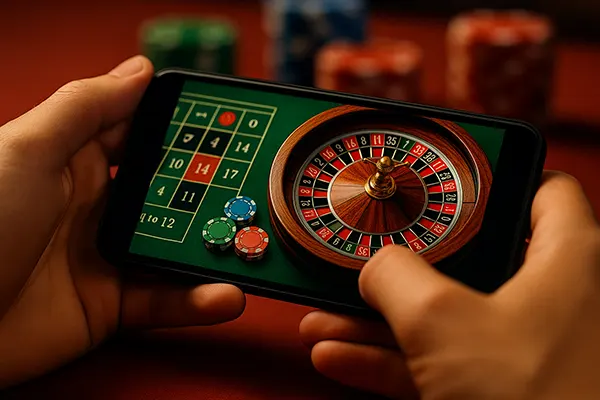
Mobile Roulette: Technical and UX Differences
Roulette has confidently transitioned from casino floors to smartphone screens. As mobile usage dominates internet traffic globally, developers and operators have reimagined roulette for modern devices. However, transferring the game from desktop to mobile involves more than just adjusting screen size — it requires rethinking usability, performance, and interaction. In this article, we’ll explore how mobile roulette differs technically and from a UX perspective, based on current technologies and user expectations as of June 2025.
Technical Features of Mobile Roulette
The core mechanics of roulette remain unchanged, but mobile implementation brings its own set of technical adaptations. Developers must optimise game engines to support fast loading times, responsive gameplay, and high visual fidelity on a variety of hardware.
Modern mobile roulette relies on lightweight coding frameworks and efficient graphical rendering through WebGL or Unity, ensuring compatibility across iOS and Android. Progressive Web Apps (PWAs) are also gaining ground as an alternative to native apps due to their installability and offline functionality.
Security is another key aspect. Roulette games on mobile are encrypted with end-to-end SSL, ensuring transaction and gameplay integrity. Many now also include biometric authentication (e.g. fingerprint or facial recognition) for faster and safer login procedures.
Device Compatibility and Performance
Cross-device compatibility remains a challenge. Developers must design roulette interfaces that work seamlessly on older models and newer flagship devices alike, without compromising performance or graphical quality.
Adaptive layouts and hardware acceleration techniques help maintain fluid animations and real-time spin mechanics, even on budget phones. Additionally, energy efficiency is a priority — poorly optimised games can drain batteries quickly, impacting user retention.
Testing across multiple screen sizes and operating systems is vital. Differences in touch response, resolution scaling, and processing power require continuous refinement and QA processes.
UX Nuances of Mobile Roulette
On mobile, user experience hinges on intuitive design and seamless control. Unlike desktops where players use a mouse and keyboard, mobile roulette depends on finger gestures, taps, and swipes.
Touch target optimisation is critical — buttons must be large enough to avoid accidental bets or misclicks. Navigation should be minimalistic and focused on the spin action and betting interface, with side menus or pop-ups only when necessary.
Visual clarity is equally important. Many mobile roulette games now use simplified designs with high-contrast elements to enhance visibility under different lighting conditions, from indoor gaming to playing in direct sunlight.
Gesture-First Interaction Design
Designers increasingly implement gesture-first interactions. Swiping to switch tables, pinching to zoom on the wheel, and tapping to place chips streamline the betting process without cluttering the screen with UI elements.
Haptic feedback adds immersion — a subtle vibration when placing a chip or when the wheel stops helps replace the physical experience of a real-life roulette table.
Furthermore, onboarding tutorials have been condensed for mobile users. Most games offer a few-slide guide or a one-minute interactive demo, prioritising quick understanding over long explanations.

Data, Personalisation, and Real-Time Features
Modern mobile roulette games integrate real-time data and personalisation tools to improve player retention. Analytics inform layout and feature adjustments, while AI-driven recommendations adapt bet suggestions based on user habits.
Multiplayer modes and live dealer integration offer more immersive gameplay. These features rely on stable, low-latency connections, often prioritising Wi-Fi or 5G to maintain stream quality and timely bet placements.
Push notifications keep users engaged, reminding them of ongoing promotions or new table openings. Personal settings like betting limits, favourite numbers, and colour schemes are stored to offer a consistent experience across sessions and devices.
Smart Notifications and Responsible Play
Mobile roulette applications increasingly include tools to support responsible play. Session timers, loss limits, and break reminders are now standard in regulated apps.
Smart notifications alert players about limits being approached or when it’s time to take a break — these are part of larger compliance efforts and user safety initiatives rolled out across Europe and the UK in 2024–2025.
Moreover, players can synchronise accounts across devices, maintaining their responsible play settings regardless of whether they use a phone, tablet, or desktop.
Most popular
-
 Review of the Lucky Joker 10 Cashspins slot from Amatic
Review of the Lucky Joker 10 Cashspins slot from AmaticIn the diverse world of online slots, the “Lucky Joker 10 Cashspins” by Amatic stands out as …
-
 What is poker? Tips for new players
What is poker? Tips for new playersIn today’s world, a person receives a great deal of information every day, makes many different decisions …
-
 Bonanza Slot Review: A Comprehensive Guide
Bonanza Slot Review: A Comprehensive GuideBonanza is one of the most celebrated slot games developed by Big Time Gaming (BTG). Known for …
